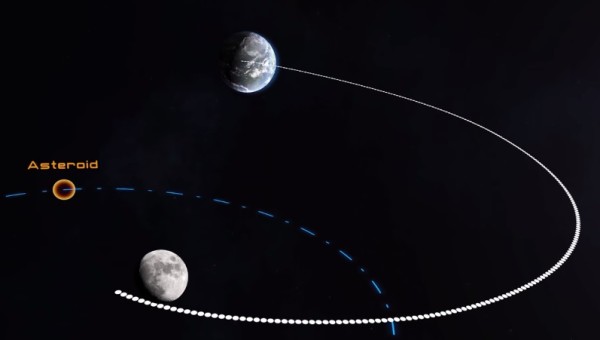NASA's Asteroid Redirect Mission's initial plan was to to capture an asteroid and bring it back so that it can orbit around the moon.
However, NASA officials announced some new developments of the plan on March 25 about collecting a boulder from the surface of the asteroid and bringing back that boulder into the orbit of our moon instead of the asteroid itself.
Scientists have now chosen a likely target for this mission called the Asteroid EV5.
The robotic ARM mission is set to launch in 2020 and will take a period of one year to reel in that boulder so that the moon's gravitational forces can capture it into orbit.
After five years, NASA astronauts will travel to that space rock via an Orion space capsule where they will conduct spacewalks across the surface of the boulder and collect and study some samples.
Over the last three years, asteroid surveys by NASA revealed that the number of near Earth objects flying by that can be potentially dangerous and smash into the planet have increased by 65 percent.
According to Jim Green, director of NASA Planetary Science, right now, asteroids are a hot topic since they could also possess pivotal scientific value and could even be the stepping stone to future manned missions to Mars.
This particular mission will conduct testing of new technology that will be used for future missions that includes the journey to Mars. One of the new technologies to be tested include a Solar Electric Propulsion drive that will collect solar energy through its solar cells where it will use that energy and convert it to charged articles, providing thrust to the spacecraft.
To date, the mission will roughly cost about US $1.25 billion not yet including launch costs.
The target Asteroid EV5 was first discovered in 2008 during one of the observations of the Catalina Sky Survey, which is a project to hunt for comets and asteroids and near Earth objects. The asteroid roughly measures some 1,300 feet in diameter where astronomers believe that larger boulders on the body the size of 10 feet is present which can be used for the mission.


